Warmińsko-Mazurskie Province
A region very popular among tourists for the Great Masurian Lakes, summer resorts and health spas, visitors will discover many charming towns lying amidst beautiful forests and bodies of water.
The Warmińsko-Mazurskie province lies in north eastern Poland, bordering Russia in the north. In Poland the province shares a border with four others: Podlaskie, Mazowieckie, Kujawsko-Pomorskie and Pomorskie. The province capital is Olsztyn. Warmińsko-Mazurskie province covers an area of almost 24,200 sq. km.
Warmińsko-Mazurskie: Land of Gothic Style, Castles and Lakes
Brick strongholds, former German bunkers haunted by ghosts of the past, forested expanses fragrant with mushrooms and berries, and – finally – water for nautical pastimes and better health; a holiday in this region is simply a must!
The name Warmia comes from the Prussian tribe of the Warmians who lived here before the Teutonic Order. It is said that Mołwita was Warmian, she was the beloved ward of Teutonic Commander Przemek, who turned into stone after losing the love of his life. The stone, legend has it, is one of the foundations of the castle in Lidzbark Warmiński, in the very heart of Warmia.
Exceptional Sites in Warmia
The Lidzbark Castle was the residence of bishops for centuries. The appearance of this four-sided brick fortress is reminiscent of those times, just like the chapel, the great and small refectory, the chapter room, the presence chamber and the apartments. After the Second Peace of Toruń, when Warmia was incorporated into Poland, Polish bishops with famous names lived there until the time of the partitions: Johannes Dantiscus, Stanislaus Hosius, Marcin Kromer and Ignacy Krasicki. It was here that Nicolaus Copernicus sketched the first draft of his theory on the movement of the Earth. Today the castle is open to tourists and the most recent renovation uncovered a sensation on a global scale; some 14th century polychrome paintings depicting the castle’s patron, St. Catherine.
Termy Warmińskie, another trademark of Lidzbark Warmiński, is the first thermal spa in northern Poland offering treatments using only natural components (thermal water, curative mud, cranberries, spices, herbs).
A family canoeing trip down the River Łyna in which old granaries and remnants of old mills are reflected is another interesting option offered by the town.
Lidzbark Warmiński lies on the Warmia-Masuria section of the Green Velo bike route, presenting beautiful Gothic castles and medieval buildings from Elblag, through Frombork, Braniewo, Pieniężno, Lidzbark Warmiński, Bartoszyce, to Sępopol.
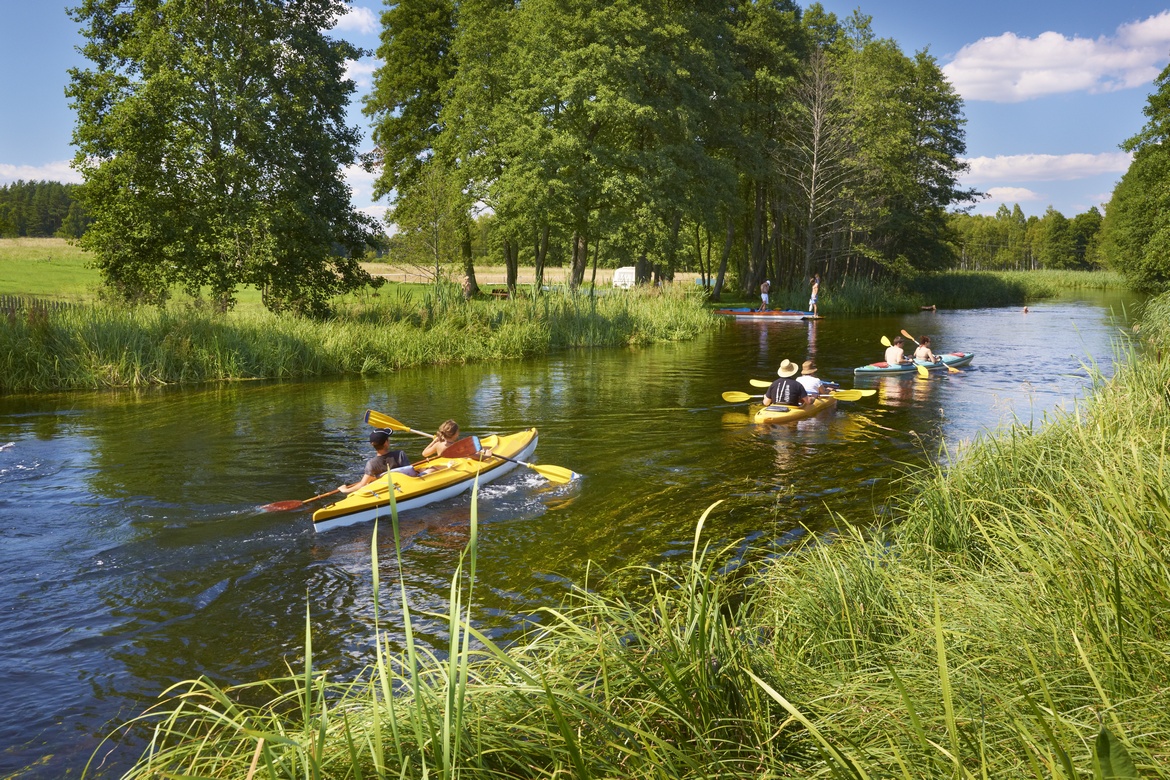
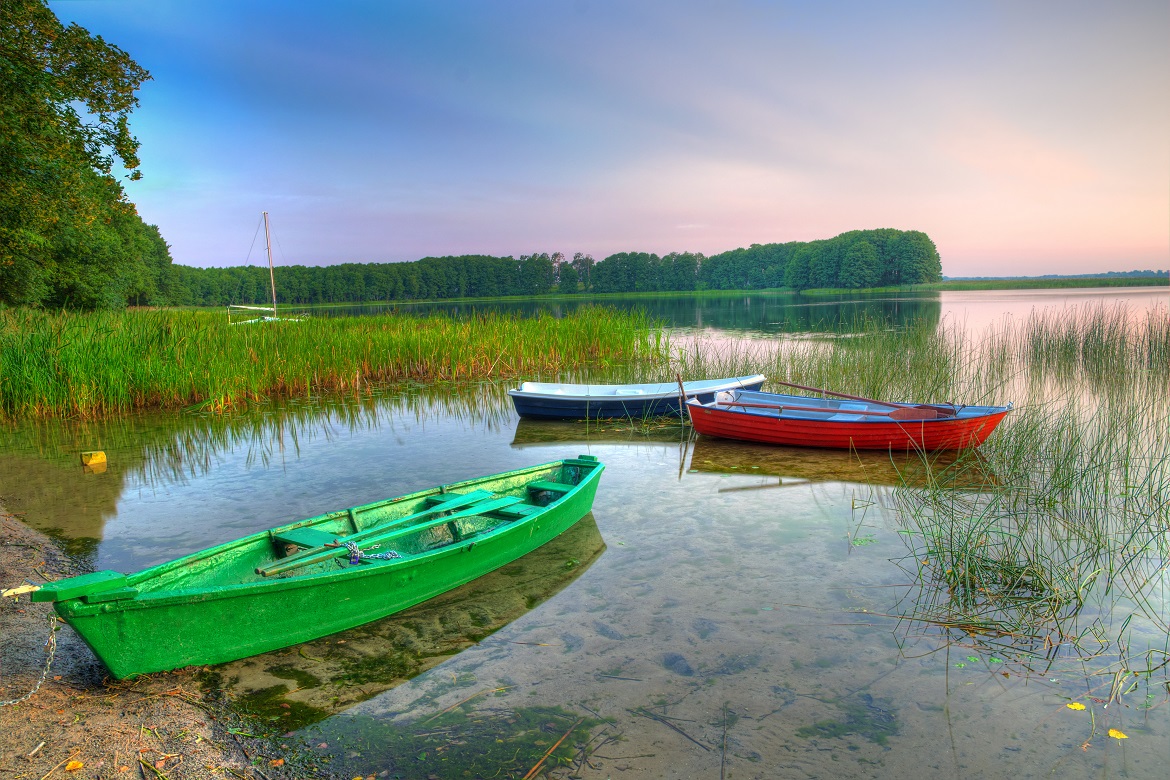
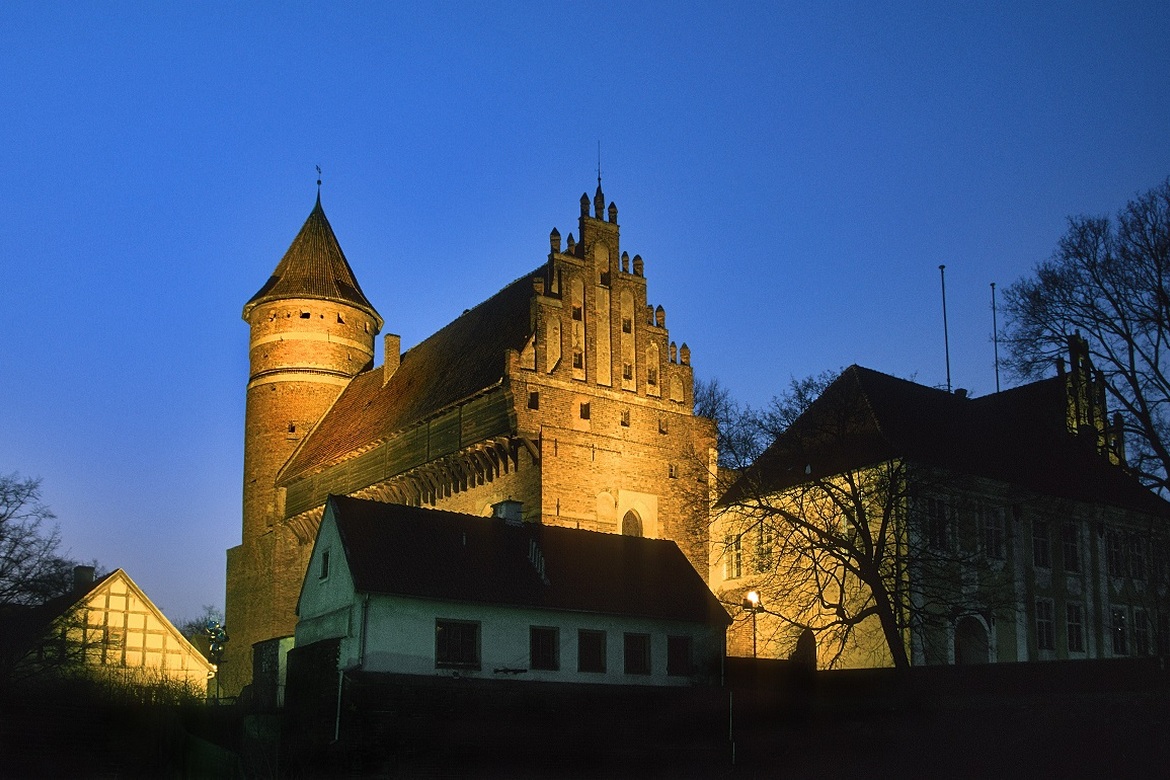
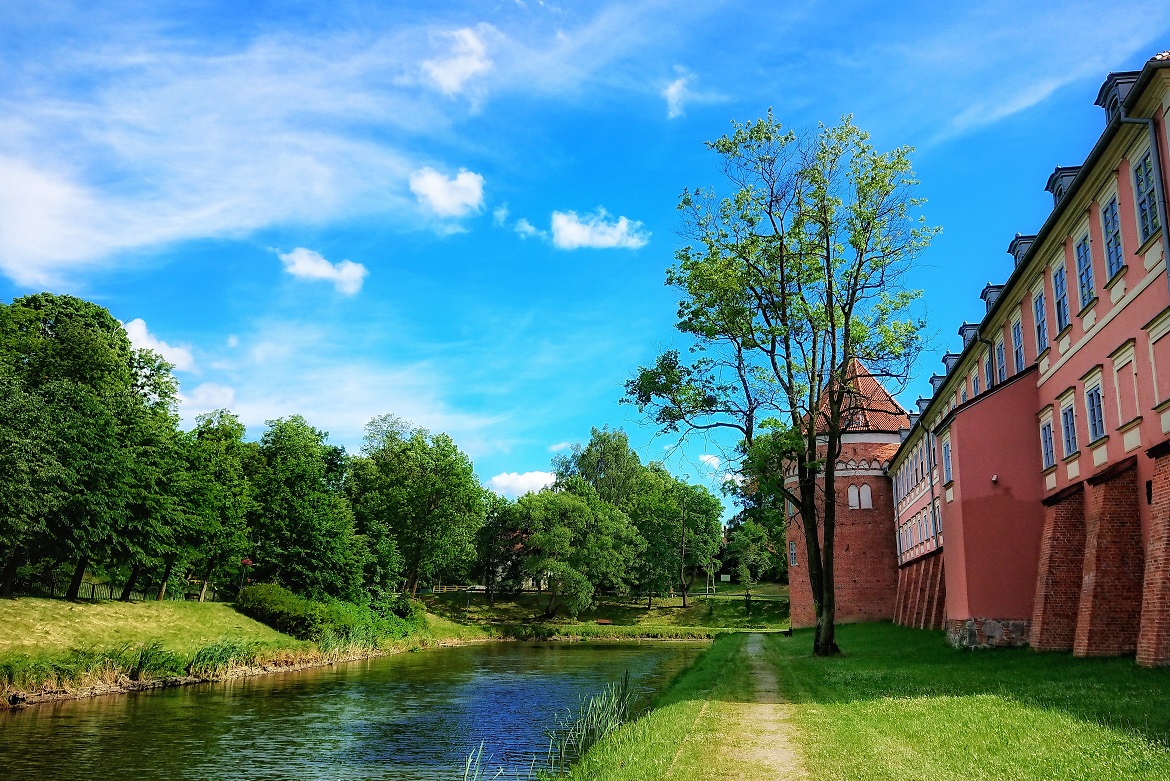
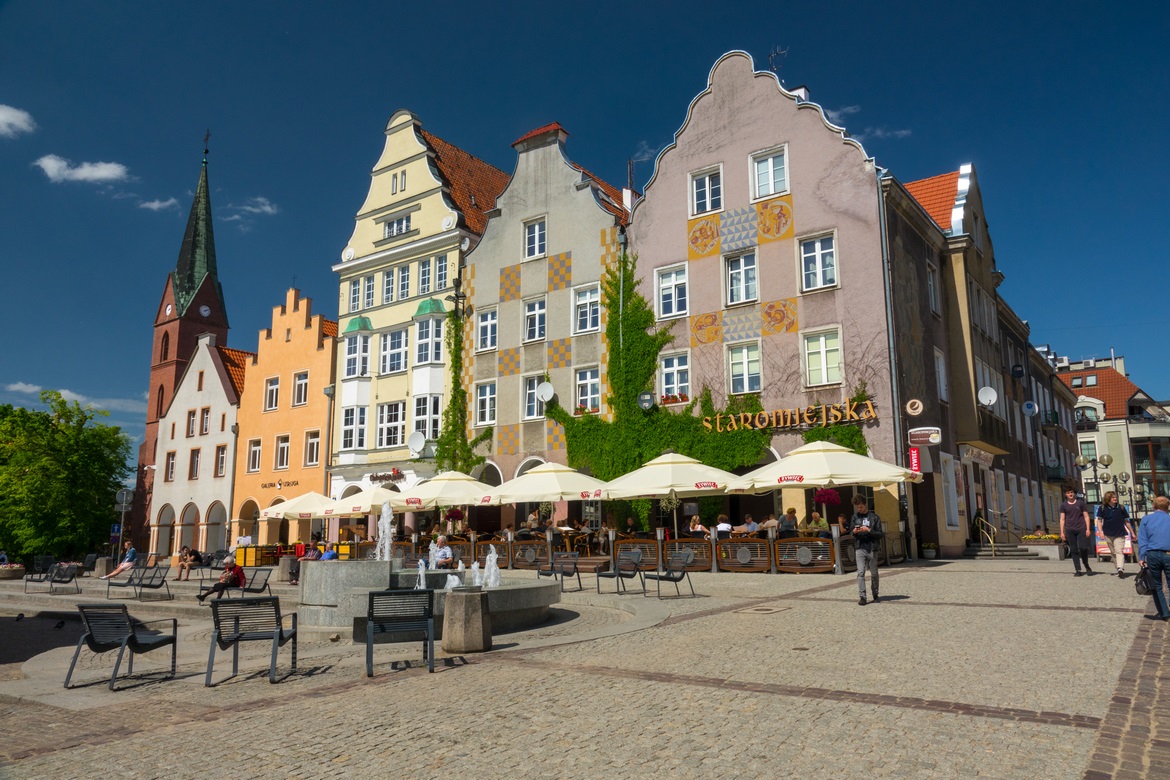
Exceptional Sites in Masuria
According to legend, Masuria owes its diverse landscapes comprising lakes, forests and swamps to… God’s mistake. After He had made the whole world and decided to rest, He realised there was a hole in his creation and decided to quickly fill it with whatever could be taken from other parts of the world. The result is the ‘Land of a Thousand Lakes’, a well-developed tourism base and home to many gems including Poland’s largest lakes Śniardwy and Mamry. Another must see is the Shrine of Our Lady of Święta Lipka. The name (meaning “holy linden tree”) is said to come from a tree that once grew here on which the figure of the Virgin Mary appeared. Decorated with papal crowns, the picture of the Virgin Mary modelled after the icon at the Basilica di Santa Maria Maggiore in Rome is housed in the late-Baroque, richly ornamented basilica visited by crowds of pilgrims. They also include Protestants because in this particular image, Mary is honoured as the Mother of Christian Unity. Daily 15-minute concerts present the church’s original Baroque organ.
Well-hidden in the forest near Kętrzyn lies the Wolf’s Lair in Gierłoż. It was called that by Hitler himself, who set up his headquarters here. Although near the end of World War II the Germans blew up this enormous complex of 80 buildings and bunkers, along the tourist route you can still see some. You can also see the remains of the conference barrack (the building itself has not survived) that was the scene of an unsuccessful attempt on Hitler’s life.
For an unforgettable experience, take a walk among the red deer and sika deer that graze in meadows on Lake Kuc and visit fallow deer and mouflons at the research station of the Institute of Parasitology of the Polish Academy of Sciences in Kosewo Górne. For more excitement, take a trip down the River Krutynia, beloved by canoers, which flows from Lake Warpuńskie into Lake Bełdany. This waterway, cutting across Pisz Forest, is considered one of the most picturesque in Poland.
The Masurian section of the Green Velo bike route runs through North Masuria and the nautical mecca of Węgorzewo, continuing on to Banie Mazurskie in the undulating Mazury Garbate region and then to Gołdap. The latter is the region’s only health resort, the town with the cleanest air in the country, a rapidly developing tourism and holiday centre and member of the elite Cittaslow organization. The spa district features the vibrant Masurian Brine Graduation Tower, the fourth-largest such facility in Poland. For relaxation, try the Zdrój pump room with therapeutic water, a salt cave and mini-graduation towers working year-round. The pier of Zdrojowy Park cuts into the lake through which the Polish-Russian border runs. The ski station on Piękna Góra offers 2km of downhill routes and a chairlift will take you to the top of the mountain and the revolving coffee shop.
Along a 10km section where the difference in height is 100 metres, you will find unique slipways for moving boats on special platforms on rails. Trips between Buczyniec and Elbląg, a route with five such slipways, are offered by the Żegluga Elbląska company.
Unusual places in the region include the pyramid in Rapa – the family mausoleum of the von Fahrenheid family – the bunkers in Mamerki, the Boyen Fortress in Giżycko and the bridges in Stańczyki, among the highest in Poland (36.5m).
In Pisz Forest on Lake Nidzkie lies Leśniczówka Pranie, the forester’s lodge where poet Konstanty Ildefons Gałczyński used to stay and work. It is open to tourists as are the poet’s favourite spots, as many as 25 of them according to the lodge’s website.
Among the region’s many events Grunwald Days is definitely worth attending, held at the scene of the famous battle of 1410 which is re-enacted during the event. Other highlights incude the Ostróda Reggae Festival, the Mazury Airshow, the Kartaczewo Regional Borderland Festival, the Elbląg Bread Festival and the Olsztyn Green Festival in the province capital.
Find out more from the regional tourism web portal of Warmińsko-Mazurskie province.

